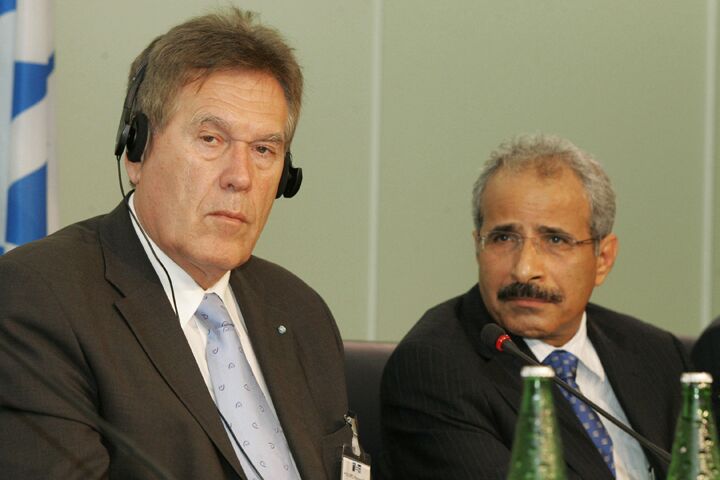
How the Weak Dollar Affects OPEC
Oil is again trading near last August‘s record high of $78.65 per barrel, and the Organization of the Petroleum Exporting Countries (opec) is making a killing—or is it?
When oil price spikes have occurred in the past, opec has quickly increased supply, taking advantage of the high U.S. dollar selling price, but also thereby eventually driving down the oil price, making Americans and everyone else who uses oil happy.
This time, however, even with such a high dollar price per barrel, opec is not stepping up production.
Peak Oil proponents note that many of opec’s oil fields, especially some of Saudi Arabia’s largest, are old and already require intensive measures to maintain current production rates. Whether or not this is true, there is another reason why opec may not be so eager to increase production.
This time, in spite of high oil prices in terms of U.S. dollars, opec is making less of a killing because the real value of the dollar is falling, and so are opec’s real profits.
On Monday, the dollar fell to an all-time low against the euro, and to a 26-year low against the pound. On the U.S. dollar index, the dollar has fallen below 80 and to the lowest levels since the index’s creation by the Federal Reserve Bank 34 years ago.
Since its international payments are made in U.S. dollars, when opec gets paid for its oil it is paid in a currency rapidly dropping in international purchasing power. Although oil prices are near all-time highs for Americans, they are actually less exorbitant in terms of the euro, the pound, or the Canadian, Australian or New Zealand dollar. High U.S. oil prices at least in part indicate a weak U.S. dollar—and the U.S. has nobody to blame but itself for that.
According to opec calculations, despite record-high U.S. dollar oil prices, when adjusted for inflation and the weaker international purchasing power of the dollar, opec oil prices have already fallen over the past year.
“The adjusted ‘opec basket price’ averaged only $43.60 a barrel in June compared with $44.30 a barrel in the same month last year, according to the organisation’s latest monthly report,” the Financial Times reported (July 23).
This loss of dollar purchasing power is affecting opec’s ability to conduct trade with its non-U.S. partners. Much of its trade is with Europe, denominated in euros and pounds, which have rapidly risen in value against the dollar.
Three months ago, opec President Mohamed Bin Dhaen al Hamli said that opec countries were “concerned about the continuing weakness of the U.S. dollar” because it was “having a significant effect on the purchasing power of oil-producing countries.”
In view of the dollar’s fall in value, the oil cartel’s refusal to increase its production and compel a reduction in the oil price is “more understandable if the lower value of opec’s spending power … is taken into account,” according to Adam Sieminski of Deutsche Bank.
Although oil prices may be near records in America, the rest of the world has not seen the prices rise as dramatically in their own currencies. Since opec maintains that in real terms its oil prices are actually falling, it has no economic incentive to increase oil production, which would only lower oil prices further.
As long as the U.S. dollar continues to fall, opec will see its real profits fall. Lack of meaningful action by opec may be the smallest of America’s dire oil supply problems.
To see one reason why gasoline prices continue to climb, read “U.S. Refineries Pushed to the Limit.”
